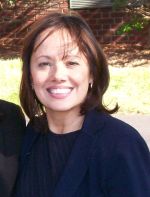Future of Leadership in CSD - Challenges and Opportunities

In today’s recent news was the resignation of Theresa May as the second female Prime Minister of Great Britain. I listened carefully to her speech and was absorbed by her physical deportment. It resonated with me as a recent author and invited presenter on Women in Leadership.
The compelling facts are that, with the overwhelming number of females in the discipline, there are a scant number of women in leadership roles when a male may be vying for an equal position of authority.
This begs the question of how we are preparing for self-determination of the future of our great profession. With the rapidly increasing demands for expertise in communication sciences and disorders across a wide scope of practice, it is imperative that female leaders at all levels be able to plan and project program need, resources, and development. Gone are the days when seniority in the profession and skilled practitioner competencies were sufficient to conceptualize, manage, and expand programs in a cost-effective manner in a highly competitive marketplace. The hands-on learning that took place via tutelage, longevity, mentorship, and natural succession have been replaced by marketable sophisticated business and office skills. Many programs have a mix of providers that can complement these needs, i.e. the CF’s who may take on the immediate caseload needs, the supervisors ensuring good practice, and senior level directors responsible not only for all operational elements but also expected to know health and educational care trends.
The goal of how to manage and develop with evolving and multi-faceted organizations calls for skills that are high profile, high visibility, and with a perceived competitive edge. Are we prepared?
I state that all SLP’s with the gift of longevity of career must get in front of many issues: These include ageism, diversity, and the need for skill sets that are diverse and ever-changing. To wit, in Beyond the Double Bind: Women and Leadership, by Kathleen Hall Jamieson, Professor of Communication and Director Annenberg Public Policy Center (1995), the many juxtapositions that confront women are artfully described. At issue, is how to strategically confront this dilemma. In Leadership in Speech-Language Pathology, Carozza (2019), the author and her two female contributors offer their hard-won advice for self-knowledge and leadership into the 21st century. This book is one of the most current resources offered by the American Speech-Language-Hearing Association as a part of the Leadership Academy initiative. Additionally, the Council on Programs in Communication Sciences and Disorders is featuring an upcoming conference on this topic, raising awareness and deepening insight (http://www.capcsd.org/wp-content/uploads/2019/06/LA-Webinar-July-17-2019).
The issues at hand are how to encourage young professionals to embark on careers and enable them to be confident of success as they move up the career ladder. Preparing for growth such as this involves a deep personal maturity, a world-view, and a “thick skin.” Writings abound on this topic; however, the unfortunate reality is that mature female leaders face the “invisibility” phenomenon as they age. This must be faced and confronted to put in the supports from the colleagues they lead. Women communicators must be unafraid of conflict, and must be clear thinkers and fair problem solvers in a highly changing landscape of work environments.
Please join me in this discussion to raise awareness and establish a voice for female leadership in a female-dominated profession.
Contact Linda Carozza, at DrLCarozza@aol.com to communicate further.
